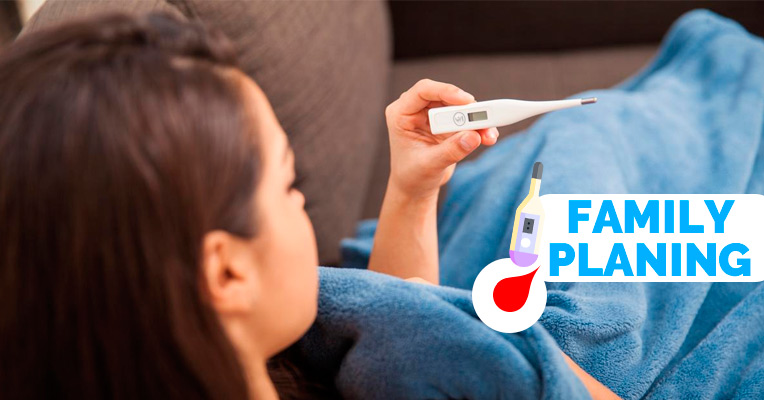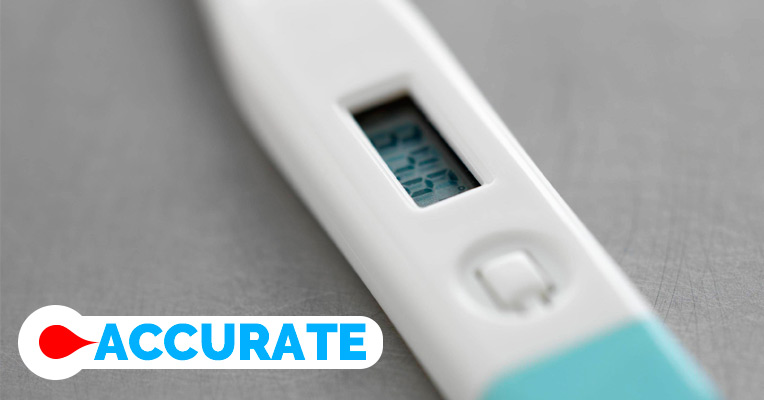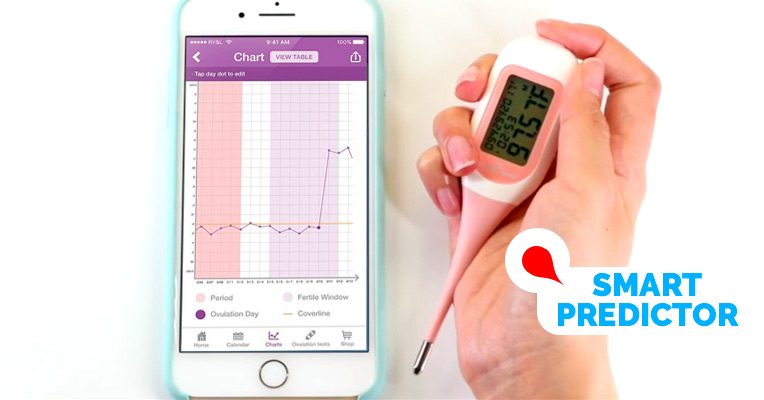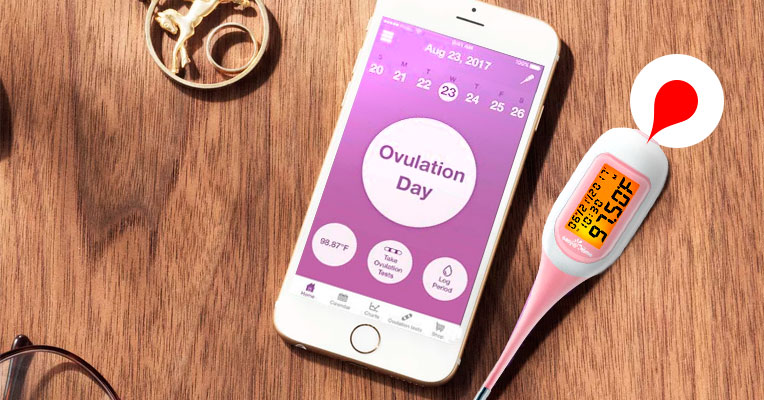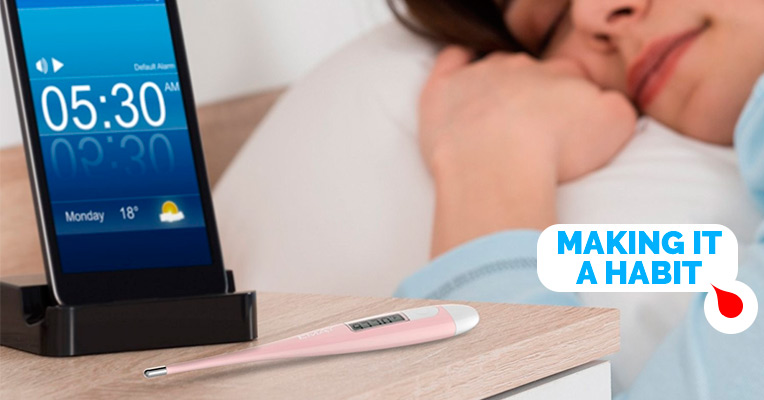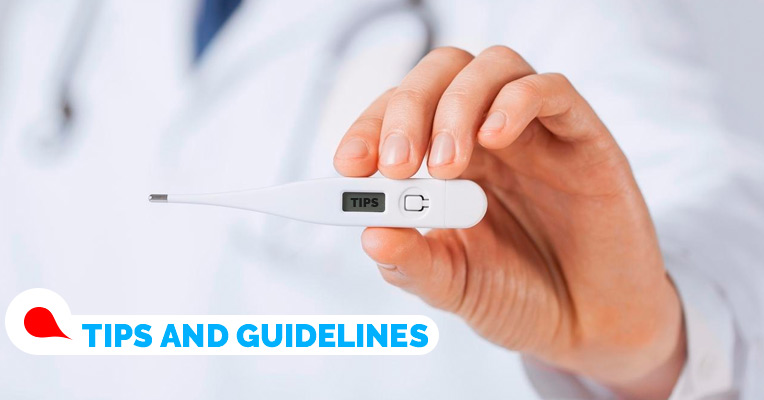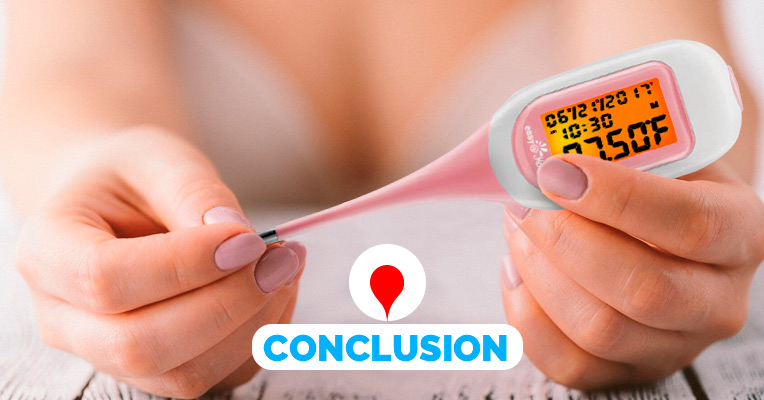Basal body temperature is your temperature when your body is in the state of rest, normally, during sleep. For women, this temperature is indicative since it varies during the menstrual cycle, signalizing ovulation and high fertility periods. With a common woman’s cycle divided into two periods and a few ovulation days in between, the basal temperature during the first two weeks of the cycle is lower and ranges from 96.0°F to 97.5°F. Ovulation causes a slight temperature rise of about 0.4°F to 0.6°F. It happens due to the increase of progesterone to ensure the added warmth for a more fertile environment. After that sudden rise that takes place when you ovulate, the basal temperature will be a bit higher and fall between 97°F and 99°F.
By recording basal temperature and entering the readings into a BBT chart, you can track ovulation and determine your fertility patterns. The highest fertility period and the best time to conceive are two or three days before ovulation. At the same time, if you want to avoid unwanted pregnancy, these are the days to avoid unprotected sex. However, the BBT method alone is not secure pregnancy prevention and it is recommended to be used in combination with other methods of contraception. Similarly, there is no standard basal temperature chart. It totally depends on an individual. The temperature baseline can vary and the temperature can rise either suddenly or gradually. To get clear info on your ovulation pattern, it is necessary to track the BBT at least within two or three cycles. For more precise results, many women also use ovulation tests along with BBT measuring. What’s more, the basal temperature can also help detect early pregnancy. If a basal temperature rise lasts more than 18 days, it might be time to purchase one of the pregnancy tests.
Though BBT charting is an easy way to way to track fertility, there is still a number of factors that can influence basal temperature in a certain way, and they should be noted on your chart. These are such factors as:
- Fever
- Some kind of infection or disease
- Certain medications
- Strong physical or emotional stress
- Alcohol and smoking
- Climate and time zone changes
- Sleeping disorders
- Breastfeeding
Usually, no special preparation is required to start tracking your basal body temperature. Yet, if you regularly take some hormonal contraceptives or follow any treatment scheme engaging some specific medicines, we strongly recommend you consult your health care provider before using BBT measuring as a method of birth control.
Basal temperature can be measured orally, rectally, or vaginally. Whatever method you choose, you will need an accurate thermometer. Wonder if an ordinary mercury thermometer will fit that purpose? No, it won’t. Precision is the key to the efficient and informative analysis of BBT charts. Designed to check overall body temperature, a mercury thermometer is far less accurate than a basal thermometer. Using a body thermometer for determining basal temperature, you can not be sure you’ll get reliable readings. Meanwhile, a BBT thermometer is normally a digital tool intended to detect the slightest temperature changes of 0.1°F.
Special basal thermometers are available in pretty much any drug store and a large supermarket, so, there will be no problem to buy one. Yet, it is easy to get lost in the range of different models, especially, if you’ve never used such a thermometer and choose it for the first time. At a glance, all models might seem the same, just like ordinary digital thermometers, but in practice, they differ in functionality and added convenience. If you seek the easiest and most simple way of measuring basal temperature and building up your menstrual cycle diagram, yet, get confused with the choice, we recommend the Easy@Home BBT thermometer from Premom.
BBT tracking is not a complicated task, it is rather about consistency and accuracy. Besides, for beginners, it might seem unclear how to create a BBT chart. It is essential to take the temperature at the same time after sleep every day. And If you are not a morning person or early riser, you can simply miss the measurement time, thus, making the whole temperature curve less reliable. With the Premom Easy@Home basal thermometer, BBT tracking will be smooth sailing.
Designed like a standard digital thermometer, the Easy@Home is a breeze to use. You just need to turn it on, put it in your mouth, and wait for a while to let the device take the measurements. Apart from temperature results, the thermometer also records time and date for easy charting. A flexible probe is very convenient and won’t break or deform even if slightly bent. Meanwhile, a large LCD display with a mild backlight will clearly display the readings under any light conditions. Providing measurements either in Celsius or in Fahrenheit, this model boasts clinically high measurement accuracy of ±0.09°F/±0.05°C. And though it will take you from 90 to 120 seconds to measure your BBT, which is a bit slower as compared to other similar models, maximum precise results are definitely worth waiting.
However, what really makes the Easy@Home stand out from the competition as well as makes it a perfect choice for novices and those who are reluctant to wake up earlier is the built-in intelligence. The unit comes with an integrated Premom Ovulation Predictor app compatible with both iOS and Android devices. Once you download the app to your smartphone or tab, it will sync with your BBT gauge in mere seconds. Bluetooth technology incorporated into the thermometer enables smooth transmission at a distance of up to 10 feet.
The whole beauty about this smart feature is that whenever you take your temperature, it will be immediately synced to the app. Just remember to keep the app running. In fact, the app will do all the job for you, saving you all that annoying paperwork. It will automatically fill in the temperature chart, create the cover-line, and pinpoint the BBT spikes. More than that, you can also enter your period info by tapping it on the calendar and log your ovulation test results by scanning and saving your ovulation tests. While the device will let you save and recall only 30 records, you can store unlimited data on the cloud. So, with the intelligent Easy@Home thermometer from Premom, you’ll be able to predict your fertility windows with the highest level of precision and with minimum effort from your side.
To make your BBT analysis really work, you need to be diligent and well-organized. The best way is to develop a certain algorithm of actions and set up a routine.
- Keep your thermometer near the bed or under the pillow to take the temperature before you get up.
- Set up an alarm clock to measure the temperature at the same time each day. If you miss the measurement or take it at a different time, it might skew the whole curve.
- Whether you take your temperatures orally, vaginally, or rectally, you should be consistent and follow the same method throughout the cycle.
- Put your records right away into a paper chart. And if you have an app-enabled thermometer like the Premom Easy@Home, it will do it for you.
As long as you follow the same scheme day after day, it will quickly convert into a morning habit like brushing your teeth or taking a shower.
As you’ve already guessed, taking your basal temperature is a cinch. The most, let’s say, difficult part of the whole process is records charting and interpretation. Hence, to help you get the most accurate results, precisely detect your ovulation, and reliably analyze the records, we’ve made a brief summary on final tips and guidelines to follow when measuring your basal body temperature.
- Start on the very first day of your menstrual cycle to get a complete and correct overview of temperature changes.
- Take your temperature before rising and taking any activity. It’s better to measure even before you start rolling in your bed.
- Make sure you had at least three consecutive hours of sleep before taking the measurement. Here, it should be noted that an occasional trip to the bathroom at night doesn’t matter.
- It is important to use the same thermometer throughout the cycle since even digital thermometers might have different margin errors and provide slightly different results that will influence the final curve interpretation.
- Most women choose to measure basal temperature orally. If you also go with this method, make sure you put a thermometer to the same spot in your mouth, preferably backward and under the tongue. If you stay with the vaginal or rectal measurement method, try to place it in the same depth each time.
- Though oral BBT measurement is the most convenient way, sometimes it happens that temperature pattern taken orally are unclear. In this case, switching to vaginal or rectal measuring during the next cycle will help get more accurate results and clear up the whole situation.
- If you are a fan of electric blankets or heating pads, it is recommended to keep them at the same temperature settings since heat changes can impact your basal temperature.
To round things up, basal temperature analysis is a free and simple way to plan baby birth, prevent undesired pregnancy, track your body state, and even detect some disorders in your reproductive system. The only thing that should be kept in mind is that as a fertility prediction method it works only for women with normal and regular cycles. Otherwise, you won’t be able to precisely detect those conception-friendly days. Hence, if you have some menstrual cycle disorders, it’s better to address your gynecologist to select the best family planning method that will work for you.
